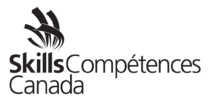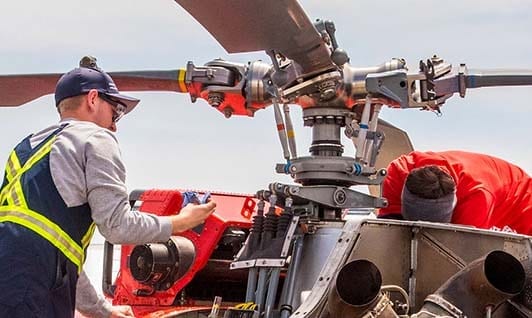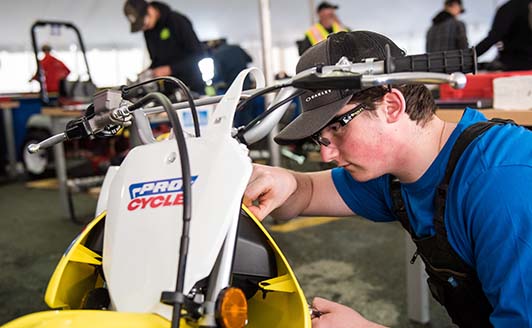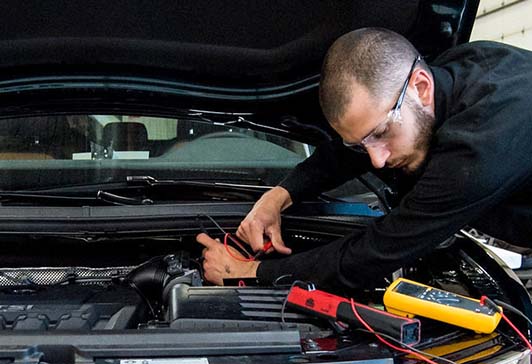Autobody Repair
What is autobody repair?
Autobody technicians make body repairs to cars, trucks and other motor vehicles using traditional hand tools and a range of specialty body repair tools such as MIG welders, spot welders, blocks, hammers and spray guns. These repairs are accomplished by inspecting and determining the repair work needed, developing appropriate methods for each job and applying a broad knowledge of automotive construction and repair techniques.
Autobody technicians use frame machines with computerized, laser and mechanical measuring systems to restore damaged frames and sections to their original shape and location. Less serious dents are straightened with hydraulic jacks or body hand tools. In addition, they remove badly damaged sections of body panels and weld and adhesive bond new sections in to replace them.
A career in autobody repair can cover a number of different areas, such as paint and refinishing, body work and frame work, although paint is considered a separate trade. Knowledge of this profession is applicable to many other areas of the automotive sector, and there is a high demand for skilled employees throughout the industry.
Workers in this unit group perform some or all of the following duties:
- Review damage report and estimates of repair cost and plan work to be performed
- Repair and replace front end components, body components, doors and frame and underbody components
- Hammer out dents, buckles and other defects using blocks and hammers
- Operate soldering equipment or use plastic filler to fill holes, dents and seams
- Remove damaged fenders, panels and grills using wrenches and cutting torch and bolt or weld replacement parts into place
- Straighten bent frames using frame and underbody pulling and anchoring equipment
- File, grind and sand repaired body surfaces using hand and power tools
- Mask and tape auto body surfaces in preparation for painting
- Mix paint, blend and match colors
- Apply primers and repaint surfaces using brush or spray guns
- Repair and replace glass components such as windshields, windows and sunroofs
- Repair or replace interior components, such as seat frame assembly, carpets and floorboard insulation
- Inspect repaired vehicles and test drive vehicles for proper handling.
HOW TO JOIN THE FIELD
Completion of secondary school is usually required.
Completion of a three- to four-year motor vehicle body repair apprenticeship program or a combination of over three years of work experience in the motor vehicle body repair trade and completion of a high school or college automotive body repair program is usually required to be eligible for trade certification.
Trade certification for motor vehicle body repair (metal and paint) is compulsory in Quebec, Ontario, Alberta and British Columbia and available, but voluntary, in all other provinces and the territories.
Interprovincial trade certification (Red Seal) is available to qualified motor vehicle body repairers (metal and paint).
INDIGENOUS AND REMOTE CONSIDERATIONS
Many Indigenous and remote communities have mechanical knowledge, particularly when it comes to machines used to hunt. This enables people to fix machines in order to continue traditional hunting and gathering activities that sustain life. However, there may be less access to formal training on mechanical knowledge. Many fly-in communities do not have access to the types of equipment and workplace technology learn the ropes in this career. Students from these communities may need to relocate to get their education and training and may also need to travel to job sites once they get a career. However, mechanical knowledge is a highly desirable skill when it comes to life in remote communities where access to replacement parts and equipment is more limited than in other parts of the country.
Although most remote communities have a mechanic in town, some may not have all the tools and equipment to do the auto body work. Larger communities may have shops and mechanics, but smaller communities may not. This may mean that people who wish to pursue this career need to consider relocation for study and employment in this field.
DISABILITY CONSIDERATIONS
As this field involves manual skills and potentially uncomfortable working environments, it may be difficult for people with physical disabilities. Some accommodations may be necessary in order to be successful. It may also involve exposure to chemicals and strong smells, which may affect some people with disabilities.
Find the right career path for you with our interactive map!
Trouvez le cheminement de carrière qui vous convient grâce à notre carte interactive!
Sample Job Titles
- Automotive refinisher
- Auto body repairer
- Automotive damage appraiser
- Automotive restoration
- Glass technician
Companies and Sectors
- Car dealerships
- Independent garages
- Specialty repair shops
- Self-employed
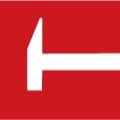
Autobody Repair and the Skills for Success Program
The key Skills for Success for this career path are:
- Reading
- Digital
- Problem solving
